An Eerie Irish Fireside Tale Rediscovered: FAR DARRIG IN DONEGAL (1888)
October’s mists have rolled in — and with them come stories best told by firelight. This week, Rediscovered Realms journeys to the wild hills of Donegal, where a weary tinker named Pat Diver discovers that not all Irish fairies grant wishes or dance in moonlight. Some prefer... darker games. Far Darrig in Donegal by Miss Letitia McClintock has been faithfully restored from the original 1888 edition — a folk tale that reminds us that laughter and fear often share the same hearth.
This post may contain affiliate links, which means we may receive a commission, at no cost to you, if you make a purchase through a link.
This Week’s Rediscovered Realms Theme Song:
Tricksters in the Mist drifts through the Irish night like laughter caught on the wind — part fear, part jest. Inspired by the folklore of Far Darrig in Donegal, this moody instrumental captures the enigmatic humor of the Red Men themselves, where the line between fear and play fades into the fog.
| Genre: Dark Celtic Orchestral | Instrumental (No Lyrics) |
“Tricksters in the Mist”
Rediscovered & Restored: A Tale of Fear, Folklore & Trickery
From W.B. Yeats’ Fairy and Folk Tales of the Irish Peasantry (1888), this eerie short story by Miss Letitia McClintock blurs the line between fright and folly — as one unlucky tinker learns what happens when you cross paths with Ireland’s most wickedly playful fairy.
Much like The Legend of Sleepy Hollow (1820 by Washington Irving), this tale walks the fine line between fright and farce — the laughter that comes only after the heart has stopped pounding. Both stories take an ordinary wanderer and set him adrift in a night thick with superstition, where the real danger may not be ghosts or goblins at all, but the way fear itself can make a fool of us.
Most versions of Far Darrig in Donegal you’ll find online or in reprint collections are riddled with transcription errors — missing words, altered spellings, even softened phrasing that dulls the story’s voice.
For this edition, I went back to the original 1888 printing in W.B. Yeats’s Fairy and Folk Tales of the Irish Peasantry and corrected every line, restoring Miss McClintock’s tale exactly as it first appeared. What you’ll read here is the true, unaltered version — straight from Donegal’s misty hills to your firelit imagination.
BTW: These Irish Fairy/Folk Tales editions are currently on a major sale on Amazon:
(As an Amazon Associate I earn from qualifying purchases)
Now, for the story . . .
FAR DARRIG IN DONEGAL
MISS LETITIA MACLINTOCK
Pat Diver, the tinker, was a man well-accustomed to a wandering life, and to strange shelters; he had shared the beggar’s blanket in smoky cabins; he had crouched beside the still in many a nook and corner where poteen was made on the wild Innishowen mountains; he had even slept on the bare heather, or on the ditch, with no roof over him but the vault of heaven; yet were all his nights of adventure tame and commonplace when compared with one especial night.
During the day preceding that night, he had mended all the kettles and saucepans in Moville and Greencastle, and was on his way to Culdaff, when night overtook him on a lonely mountain road.
He knocked at one door after another asking for a night’s lodging, while he jingled the halfpence in his pocket, but was everywhere refused.
Where was the boasted hospitality of Innishowen, which he had never before known to fail? It was of no use to be able to pay when the people seemed so churlish. Thus thinking, he made his way toward a light a little farther on, and knocked at another cabin door.
An old man and woman were seated one at each side of the fire.
“Will you be pleased to give me a night’s lodging, sir?” asked Pat respectfully.
“Can you tell a story?” returned the old man.
“No, then, sir, I canna say I’m good at story-telling,” replied the puzzled tinker.
“Then you maun just gang further, for none but them that can tell a story will get in here.”
This reply was made in so decided a tone that Pat did not attempt to repeat his appeal, but turned away reluctantly to resume his weary journey.
“A story, indeed,” muttered he. “Auld wives fables to please the weans!”
As he took up his bundle of tinkering implements, he observed a barn standing rather behind the dwelling-house, and, aided by the rising moon, he made his way toward it.
It was a clean, roomy barn, with a piled-up heap of straw in one corner. Here was a shelter not to be despised; so Pat crept under the straw, and was soon asleep.
He could not have slept very long when he was awakened by the tramp of feet, and, peeping cautiously through a crevice in his straw covering, he saw four immensely tall men enter the barn, dragging a body, which they threw roughly upon the floor.
They next lighted a fire in the middle of the barn, and fastened the corpse by the feet with a great rope to a beam in the roof. One of them began to turn it slowly before the fire. “Come on,” said he, addressing a gigantic fellow, the tallest of the four—“I’m tired; you be to tak’ your turn.”
“Faix an’ troth, I’ll no turn him,” replied the big man. “There’s Pat Diver in under the straw, why wouldn’t he tak’ his turn?”
With hideous clamour the four men called the wretched Pat, who, seeing there was no escape, thought it was his wisest plan to come forth as he was bidden.
“Now, Pat,” said they, “you’ll turn the corpse, but if you let him burn you’ll be tied up there and roasted in his place.”
Pat’s hair stood on end, and the cold perspiration poured from his forehead, but there was nothing for it but to perform his dreadful task.
Seeing him fairly embarked in it, the tall men went away.
Soon, however, the flames rose so high as to singe the rope, and the corpse fell with a great thud upon the fire, scattering the ashes and embers, and extracting a howl of anguish from the miserable cook, who rushed to the door, and ran for his life.
He ran on until he was ready to drop with fatigue, when, seeing a drain overgrown with tall, rank grass, he thought he would creep in there and lie hidden till morning.
But he was not many minutes in the drain before he heard the heavy tramping again, and the four men came up with their burthen, which they laid down on the edge of the drain.
“I’m tired,” said one, to the giant; “it’s your turn to carry him a piece now.”
“Faix and troth, I’ll no carry him,” replied he, “but there’s Pat Diver in the drain, why wouldn’t he come out and tak’ his turn?”
“Come out, Pat, come out,” roared all the men, and Pat, almost dead with fright, crept out.
He staggered on under the weight of the corpse until he reached Kiltown Abbey, a ruin festooned with ivy, where the brown owl hooted all night long, and the forgotten dead slept around the walls under dense, matted tangles of brambles and ben-weed.
No one ever buried there now, but Pat’s tall companions turned into the wild graveyard, and began digging a grave.
Pat, seeing them thus engaged, thought he might once more try to escape, and climbed up into a hawthorn tree in the fence, hoping to be hidden in the boughs.
“I’m tired,” said the man who was digging the grave; “here, take the spade,” addressing the big man, “it’s your turn.”
“Faix an’ troth, it’s no my turn,” replied he, as before. “There’s Pat Driver in the tree, why wouldn’t he come down and tak’ his turn?”
Pat came down to take the spade, but just then the cocks in the little farmyards and cabins round the abbey began to crow, and the men looked at one another.
“We must go,” said they, “and well it is for you, Pat Diver, that the cocks crowed, for if they had not, you’d just ha’ been bundled into that grave with the corpse.”
Two months passed, and Pat had wandered far and wide over the county Donegal, when he chanced to arrive at Raphoe during a fair.
Among the crowd that filled the Diamond he came suddenly on the big man.
“How are you, Pat Diver?” said he, bending down to look into the tinker’s face.
“You’ve the advantage of me, sir, for I havna’ the pleasure of knowing you,” faltered Pat.
“Do you not know me, Pat?” Whisper—”When you go back to Innishowen, you’ll have a story to tell!”
I really liked this story. Something about it immediately struck me as something special that would stick with me — the strange behavior of those giant men, and the question of how much real danger Pat was ever in. What had he done to draw their attention? Was there a lesson hidden beneath the mischief? And what exactly did that final whisper mean — a warning, a threat, or just a jest?
It’s stories like this, the ones that leave a lot of mystery behind, that linger the longest — the kind that spark your imagination and make you want to wander back through the fog to find what you might have missed.
What follows are a few bits of background about the Far Darrig themselves, the author Miss Letitia Maclintock (or is it McClintock?), and that curious phrase “Faix an’ troth!” — details that fans of this eerie Irish tale may find enlightening.
👹 The Far Darrig — Ireland’s Red Trickster
In the old Irish fairy hierarchy, not all the Good People were graceful dancers or wish-givers. Some were born for mischief.
Among them lurks the Far Darrig (from Fear Dearg, meaning “Red Man”) — Solitary fairies known for their crimson caps/clothing or fiery red hair, grinning face, and taste for cruel jokes.It seems these tricksters delight in mockery, fright, and the occasional morbid prank. They’re the sort to appear on lonely roads or at crossroads, offering help to travelers — only to lead them astray, laughing from the mist once their victim is lost.
That devilish sense of humor runs through Letitia Maclintock’s Far Darrig in Donegal, where a poor tinker finds himself trapped in one long, terrible joke. Is it horror? Trickery? Or just the Far Darrig’s idea of a good laugh?
(Below: the original introduction from Yeats’s 1888 anthology, defining the Far Darrig and his kin.)
🖋️ Who Was Miss Letitia McClintock?
Miss Letitia McClintock (1835–1917) was a Donegal-born storyteller and collector of Irish folklore whose tales were gathered by W.B. Yeats in Fairy and Folk Tales of the Irish Peasantry (1888). Writing in the local voice of rural Ireland, she captured the eerie humor and wild imagination of the northwest countryside.
As well as Far Darrig in Donegal, I went page by page and found these other stories of hers in Yeats’s collection:
A Donegal Fairy
Jamie Freel and the Young Lady
Grace Connor
Bewitched Butter (Donegal)
I’m not sure why Yeats has her cited as “Maclintock” instead of “McClintock” in each of her stories. Was it a mistake? Pen name? Considering the Irish source material and her deep Irish roots, the Scottish “Mac” seems unlikely as a deliberate choice, though her mother’s maiden name “Macan”, might suggest Scottish roots.
When you look at her other works, however, her name is clearly printed as McClintock. One can only imagine her frustration that her most widely read work appeared under a misspelling!
Here are her other cited works from Wikipedia:
Seven Irish Tales (1857)
A Boycotted Household (1881).
Alice’s Pupil (1883)
Sir Spangle and The Dingy Hen
The Cottagers Of Glencarran (1869)
The March of Loyalty (1884)
Though little is known of her life, Letitia’s tales still shimmer with Donegal’s mist — where laughter, fear, and fairy mischief walk hand in hand.
☘️ “Faix an’ troth” — An Irish Oath
“Faix” is the Irish dialect form of faith, and “troth” is an old word for truth, loyalty or pledge. Together they mean something like “By my faith and truth!” — a rustic, emphatic way of saying “I swear it.”
Common in 19th-century Irish speech and old English tales alike, phrases like this carried the weight of a promise . . . or the punch of a colorful refusal.
How it plays in Far Darrig in Donegal:
Each time the giants say “Faix an’ troth, I’ll no …” they’re refusing to take a task by invoking a solemn refusal - an oath — “I swear it is not my turn.” Because the fairies in this tale treat the phrase casually (as part of banter or blunt speech), it gains both authority and rustic character.In Pat Diver’s case — every time the giants dodge their grim task, they do it by “faith and troth.”
Attestation note:
While no definitive instance of “Faix an’ troth” in exactly that spelling was located in digitized 19th-century Irish newspapers, the formula “faith and troth” was known in English and Irish-English colloquial speech as an exclamatory oath. Typical dialect renderings (like faix for faith) were common in the transcription of Irish rural speech. Its use in Far Darrig in Donegal fits perfectly with folklorist attempts to capture the spoken word in print.
So as the nights grow longer and the winds whisper over the moors, remember the Far Darrig — the Red Men who delight in fear as much as fun. Whether you see them as a ghoul or a prankster, their effect lingers: in every good scare, there’s a spark of awe of the unknown waiting to rise.
Until next time, beware the tricksters in the shadows, Unawares Adventurer — and keep the spirit of play alive through this autumn season.
What did you think of this story? Was there a lesson to be gleaned somewhere within?
Have you ever heard of the Far Darrig before — the “Red Men” of Irish folklore?
Do you think they’re more monster... or a mischief-maker?
What’s your favorite eerie folk tale or fairy story to revisit in October?
Your next piece of fantasy fun is calling.
Make sure to check out our newly updated “Mythology, Fairytales & Fables” Amazon list with some awesome Irish tales to explore!
(As an Amazon1 Associate I earn from qualifying purchases)
Other related Rediscovered Realms editions you may enjoy:
You are not only brave, but a Generous Adventurer whose love of Discovery, Imagination & Fun transcends our mere mortal coils . . .
. . . and for that, I thank you!
Do you love heroic fantasy gamebooks like me? Consider signing up to be informed when I launch my very 1st one!
(Featuring artwork from Clyde Caldwell & Luke Eidenschink!)
Amazon and the Amazon logo are trademarks of Amazon.com, Inc. or its affiliates.



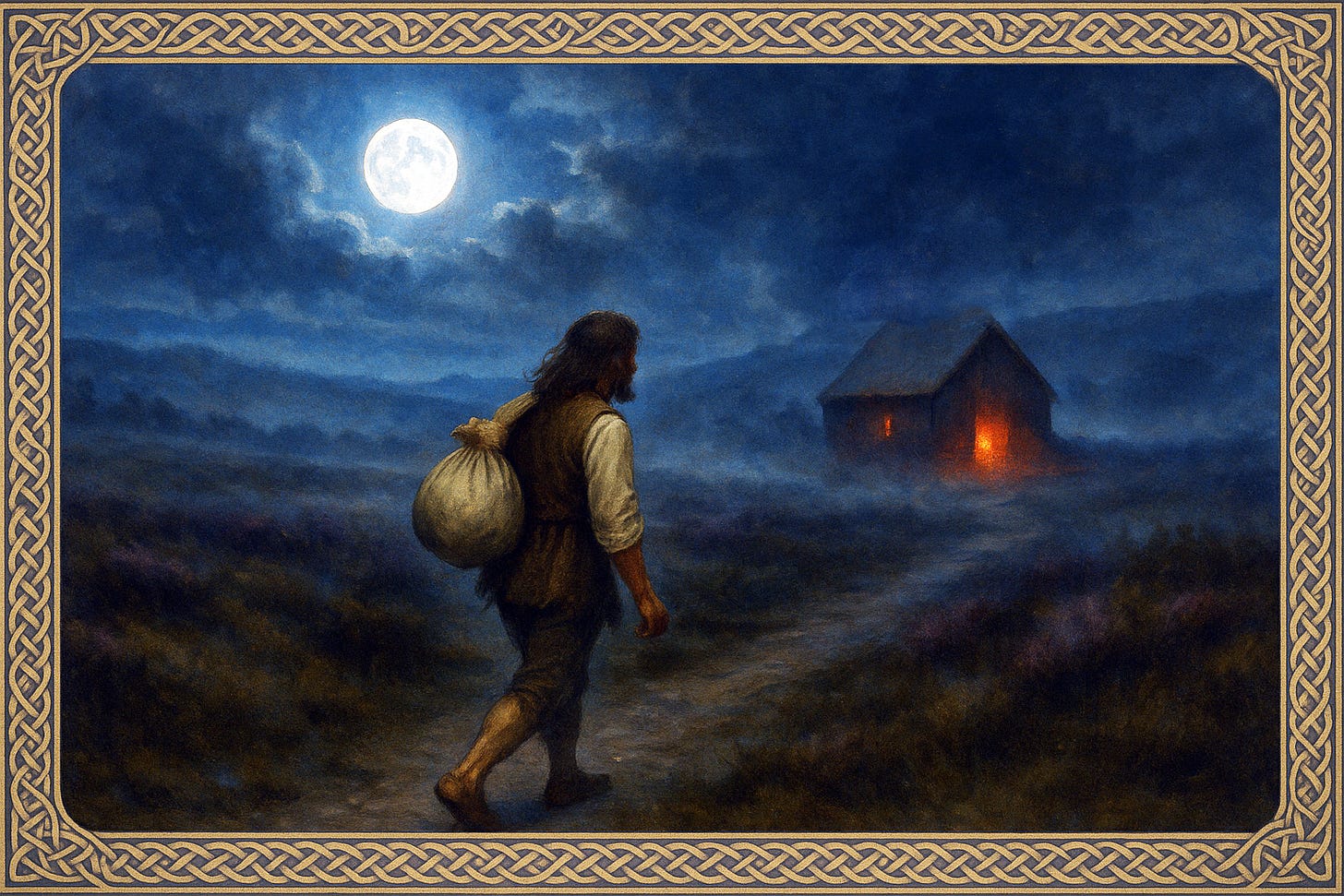
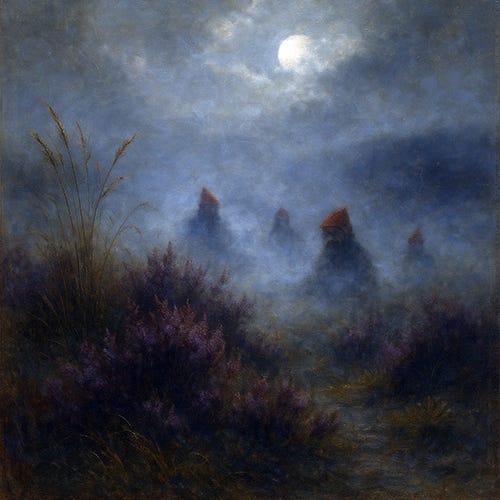
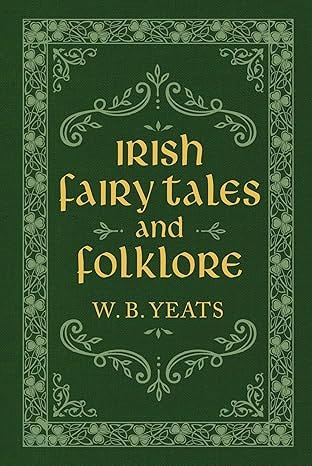
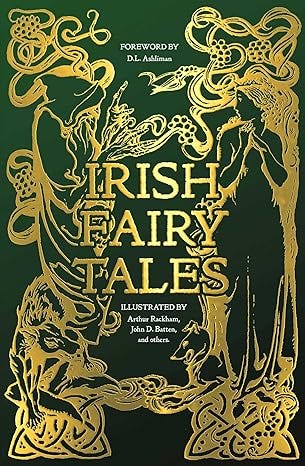
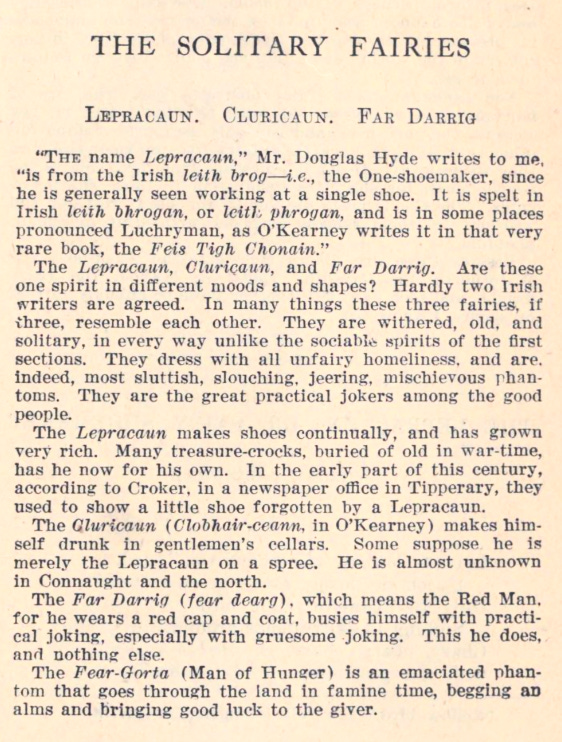
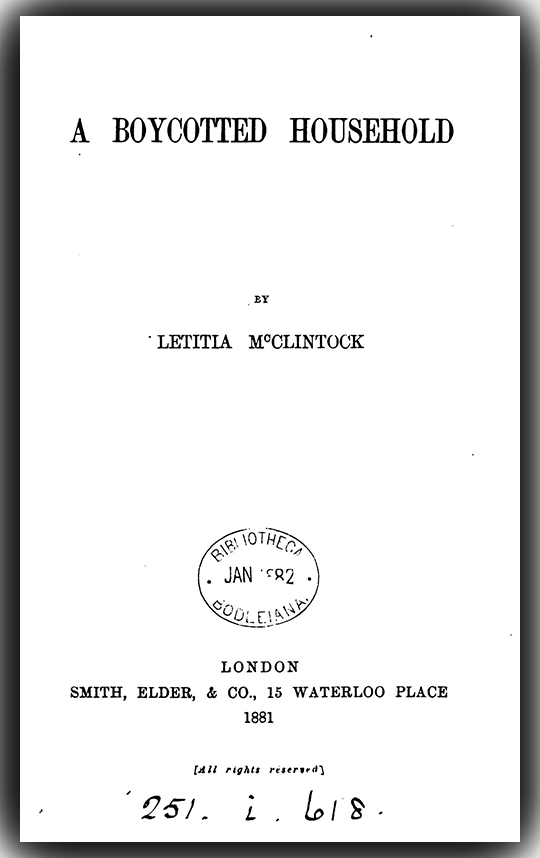

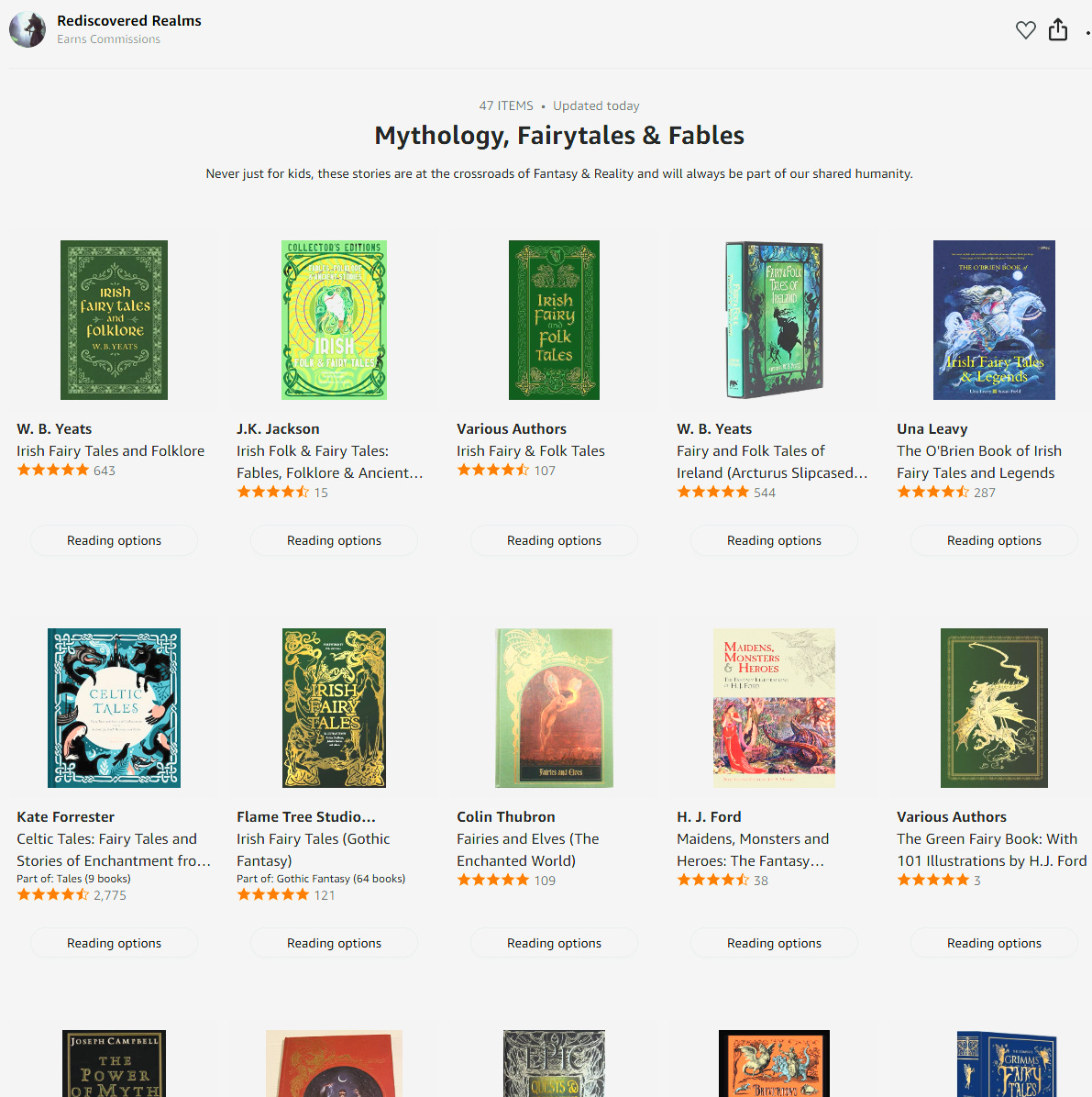
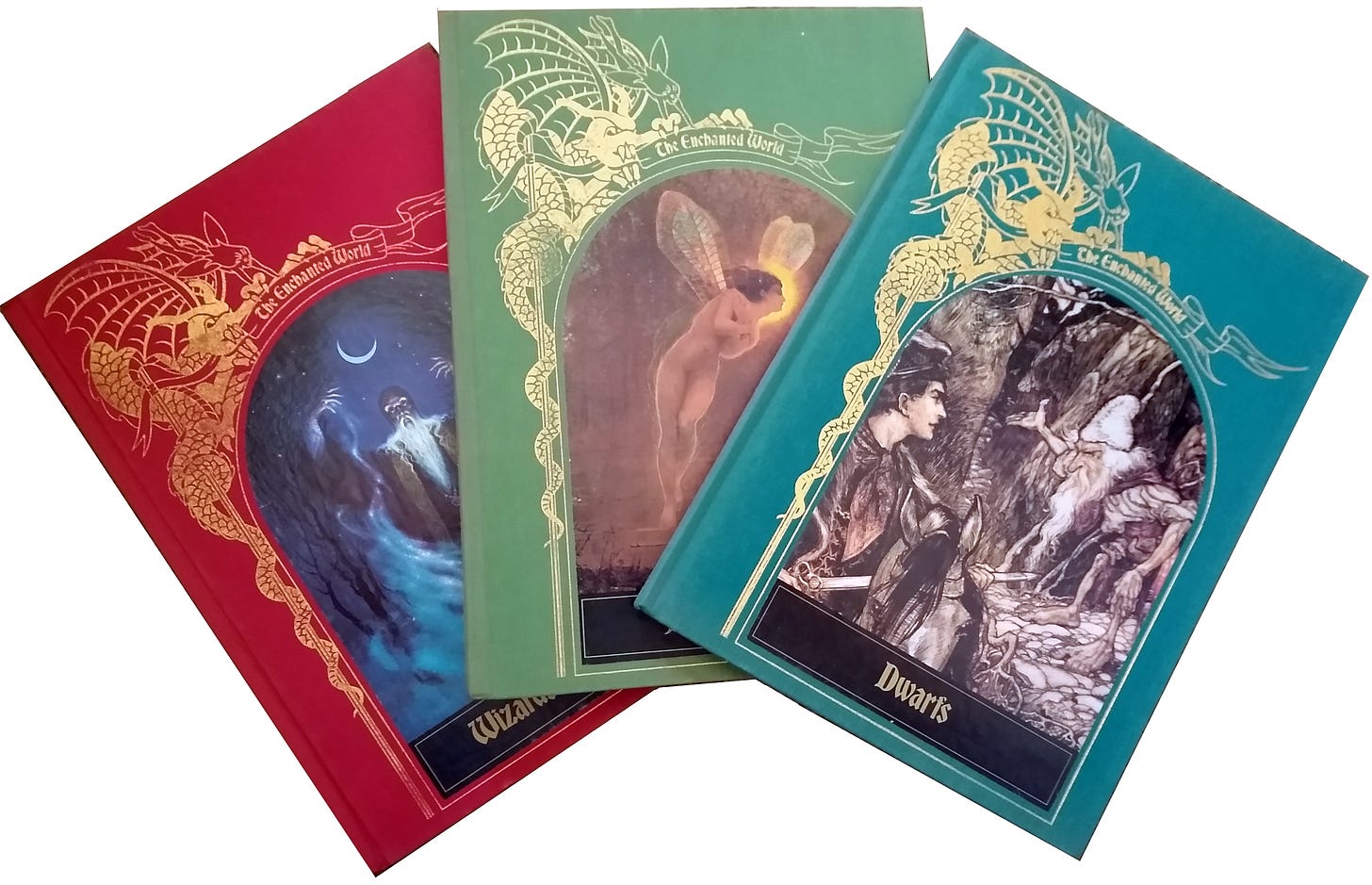
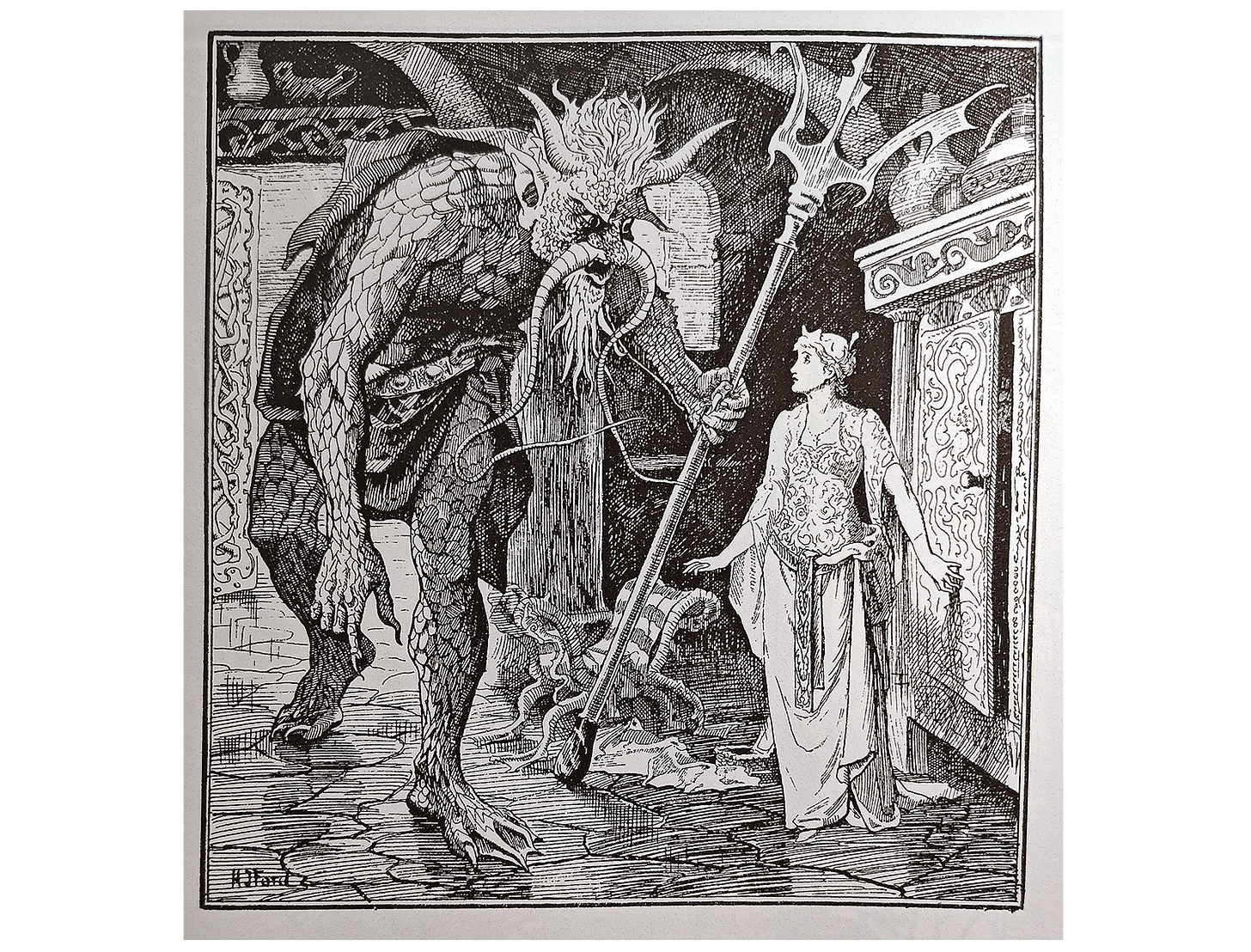
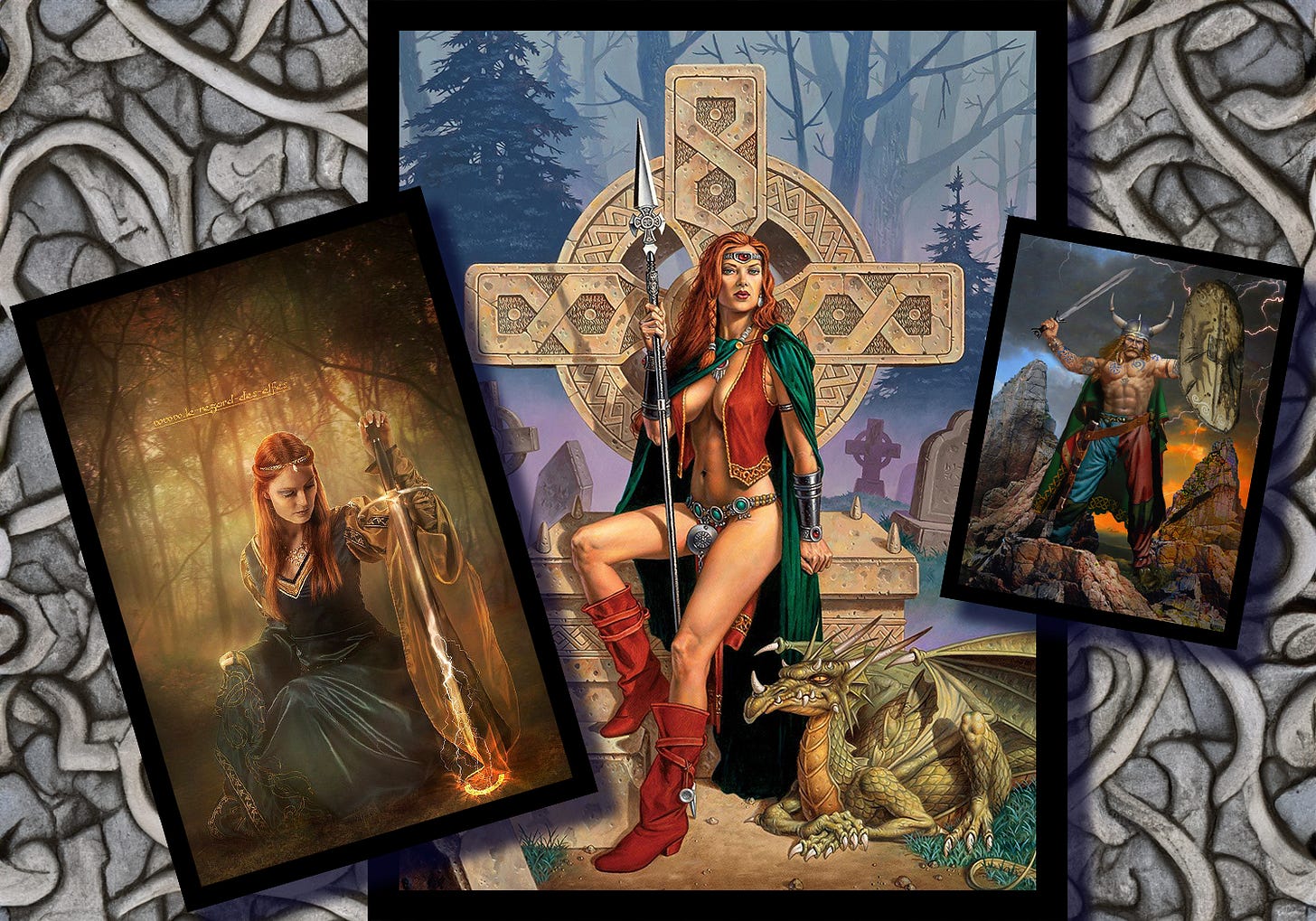

Loved this little deep dive into this folk story and perfect for the season. Those kinds of stories always make you wonder if there's lesson. Could it be since he still took room and board in their home, the barn, without paying the price they decided to "give or loan" him a story to pay with as a lesson.